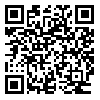BibTeX | RIS | EndNote | Medlars | ProCite | Reference Manager | RefWorks
Send citation to:
URL: http://jria.iust.ac.ir/article-1-609-en.html
Urban development plans define the process of planning for urban improvement based on both Islamic regulations and substantial principals of urbanism. The rights of private ownership are basically emphasized in Iranian constitution. Attempts of urban redevelopment plans are inherently in contrast with the private rights of ownership.
Rules and regulations governing the urban systems are considered as a common point of Legal Studies and Planning. On the other hand, urban system as one of key elements of the relationship between the state and the nation regulates the proportionality between people and public based on private low and public low.
In this sense explaining the precise view of private ownership and public interest in the process of planning for urban re-development is the necessity that needs the interaction of these two main aspects of urban studies.
In order to understand the structural and substantial aspects of public interest and private ownership is in parallel with the questioning about the balance between private and public rights in the urban planning process. The right to the city is in no conflict with other civil rights in its truss sense, but there are some constraints and weaknesses in the definition of the nature and explanation of this right on the one hand, and its interaction with other, which has some consequences for urban development plans and programs on public scale and in the contax of urban regeneration measures on particular scale.
This research applied the qualitative approach and the analytical-interpretative methods. The methodology is based on the process that analysis and interpret the regulations of acquisition under the logical strategy.
These regulations are measured regarding seven elements of “constitution, civic laws, public interest, private ownership right, urban rights, justice and performance”.There are 76 indicators derived from these 7 elements among them the most compatible, conflicting and ambiguous ones are selected. In this analysis the weaknesses and constraints of these regulations are explained.
This output guides the researchers to propose the new approach in studying the urban regulations which could meet the needs of multiple interests and could lead to compatibility of interests in public and private sphere which is one of the critical goals of urban planning systems
The indicators of ownership and public interest are the most compatible ones in the regulative contexts. Also, the indicators of regulative process, administrative systems and implementation costs, are the most ambiguous ones.
For the most important conflicts between the goals of the right to the city and process of “Urban regeneration measures, we can refer to neglect to” private property rights. Rights to private space is the right that gives meaning to the living of residents in city. But the right to the city may not only be achieved, but injustice also manifests itself more in urban spaces when measure for urban regeneration forbids residents from the right to space with an aim to realize the right to the city, let the property right the residents remain at the periphery.
The rights of ownership, social participation, public interests and private ownership right are the most conflicting ones which challenge the redevelopment actions in urban planning systems
The result of the research ends in the mechanisms analyzing the procedural and regulative aspects of acquisition regulation. The research aims to enrich the concept and position of the right to the city by probing into imam Ali highway project from two aspects, property right and the right to city and parallel with it, it aims to define property on the hand and balance the existing conflict between property right and the right to the city, thus the research has a qualitative nature and approach and mainly rests on a critical analysis, in that using logical argumentation it analysis and investigates the position of the two concepts”the righto the city” and “property right” in the process of urban regeneration measures, both in terms of a case study(imam Ali highway in Atabak and Minaee neighborhoods) and documentary studies.
To recognize the structure of public and private law in the urban system of the country it is necessary to answer the question “what is the entity of the urban rules and regulations of country in the light of Islamic laws and regulations?” the methodology of research based on the system interpretation of the urbanization of the country is in order of governing on the legal sources.
This analysis is qualitative and determined using Logical reasoning technique and documentary studies method. Analysis of the actors of the private and public spaces of cities on the one hand and the redefinition of the public and private rights in the legal order of country on the other hand, guides us to the new pattern and approach regarding the rights of urban studies. This approach, by providing multiple needs and Compatibility varied interests between the private and public spheres, leads to the manifestation of civil rights ideals.With the applicable proposals, the balance between public and private interests is facilitated and these findings could lead to the sustainable interaction between these two critical and conflicting aspects of urban redevelopment actions.
Received: 2017/03/17 | Accepted: 2017/03/17 | Published: 2017/03/17
| Rights and permissions | |
 |
This work is licensed under a Creative Commons Attribution-NonCommercial 4.0 International License. |





